
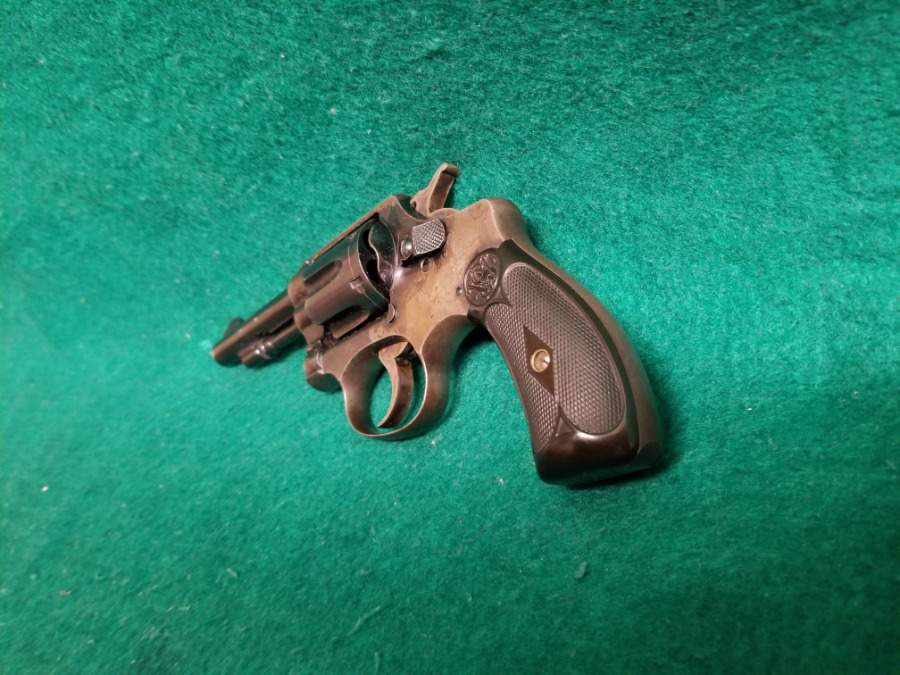
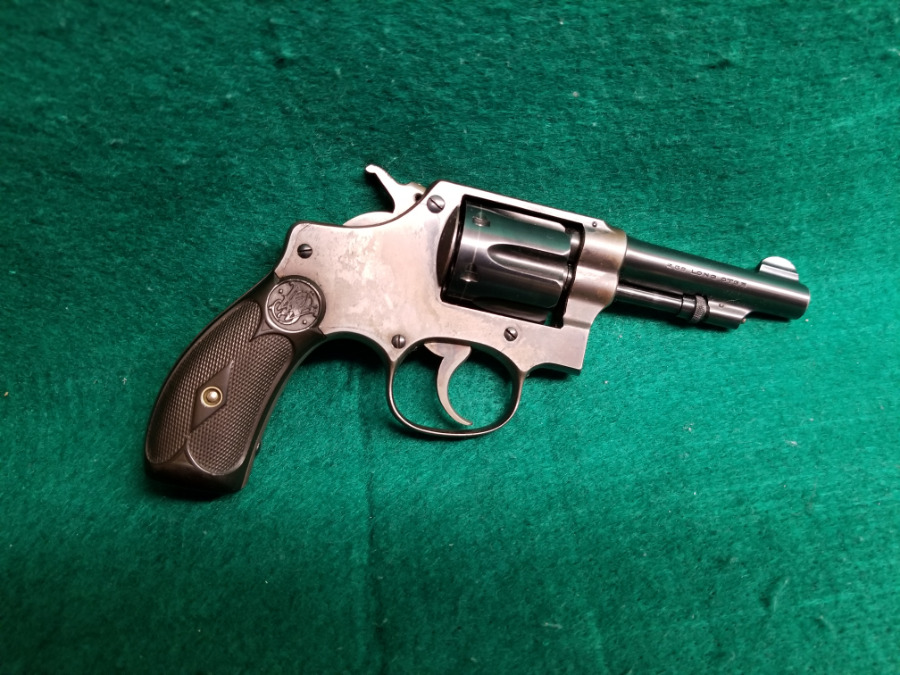
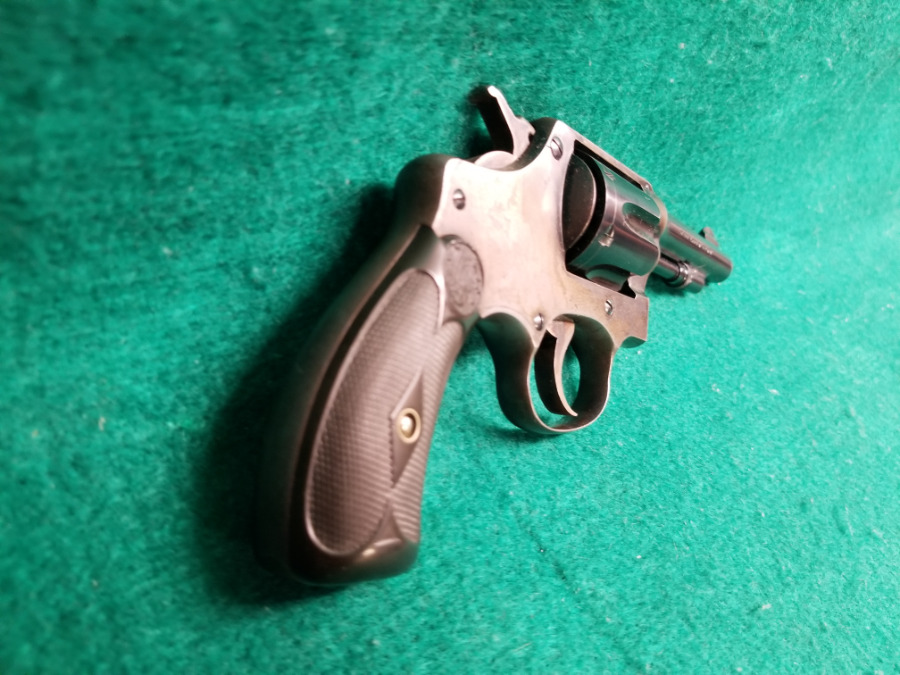
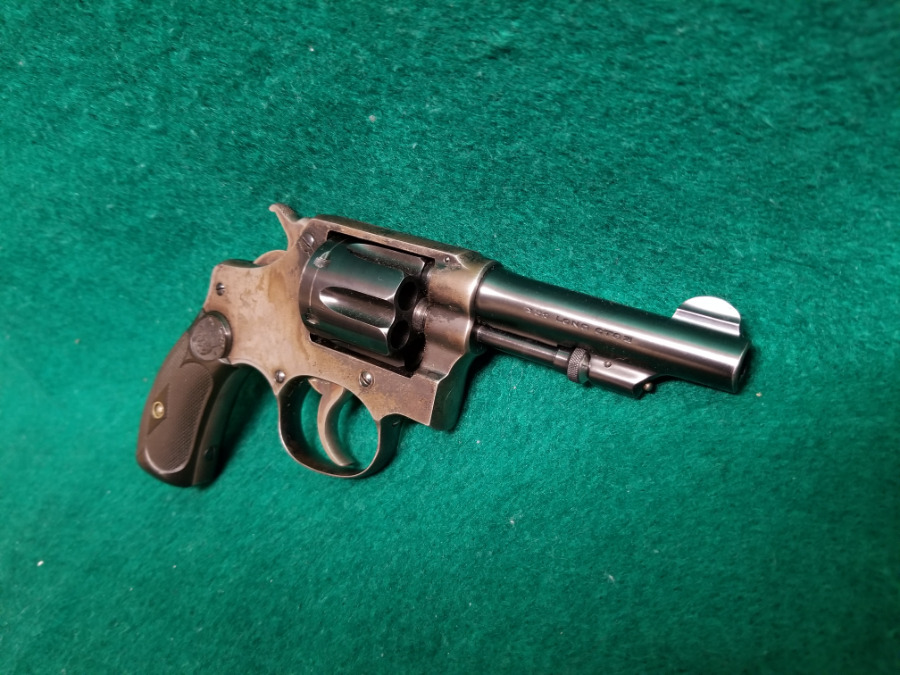
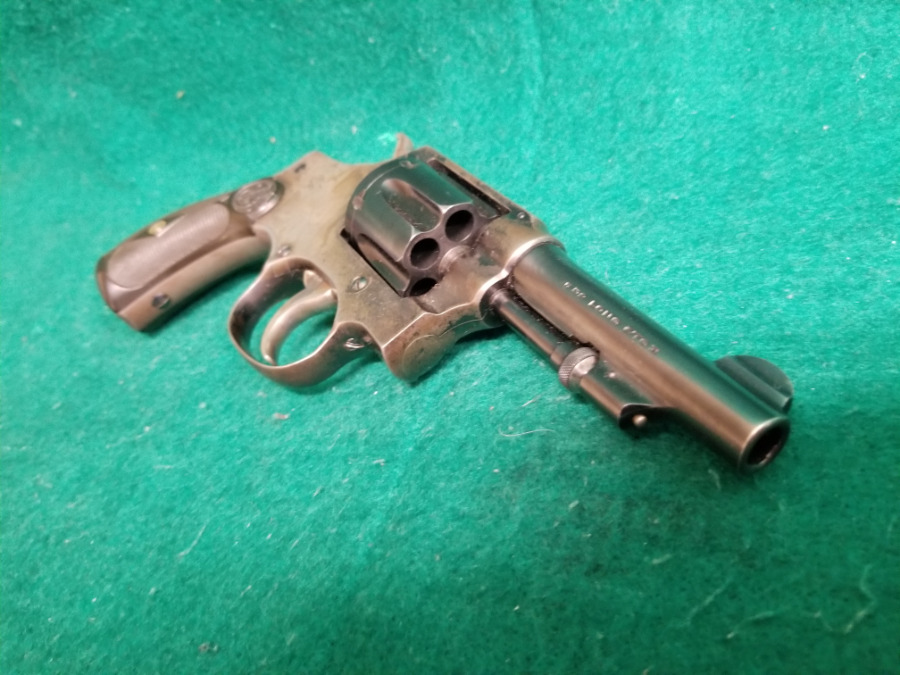
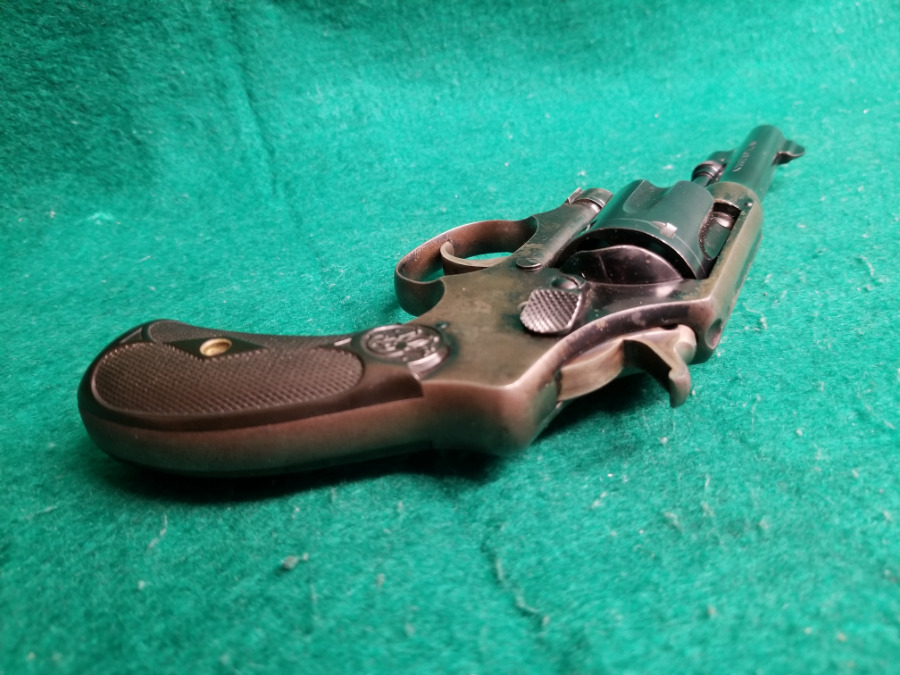
Smith & Wesson Model 30
| Smith & Wesson Model 30 | |
|---|---|
| Type | Revolver |
| Place of origin | United States |
| Production history | |
| Manufacturer | Smith & Wesson |
| Produced | 1903-1976 |
| Specifications | |
| Length |
|
| Barrel length |
|
|
|
|
| Cartridge | |
| Action | Double-action |
| Feed system | Six round cylinder |
| Sights | fixed |
The Smith & Wesson Model 30 is a small-frame, six-shot, double-action revolver chambered for the .32 Long cartridge. It was based on the Smith & Wesson Hand Ejector Model of 1903, and could be had with either a blued or nickel finish. It was a “round butt” I-frame and was produced from 1948 to 1976.[1]
Contents
[hide]
History
From 1948 to 1957, this model was known as the “Model .32 Hand Ejector” and was built on the 5-screw I-Frame.
In 1958 the frame was redesigned to use four screws and a coiled mainspring as opposed to a flat or leaf spring and called the “Improved I-Frame”.
Three years later in 1961, the “I-Frame” was discontinued and the slightly longer 3-screw “J-Frame” replaced it.[1]
Variants
A square butt version first known as the “Model .32 Regulation Police” was made during the same time period as the “Model .32 Hand Ejector” and was eventually replaced by the Model 31 in 1958.
The Model 31 followed the same path as the Model 30 with regard to production dates.[1]
————————————–
.32 S&W Long
| .32 S&W Long | ||||||||||||||||
|---|---|---|---|---|---|---|---|---|---|---|---|---|---|---|---|---|
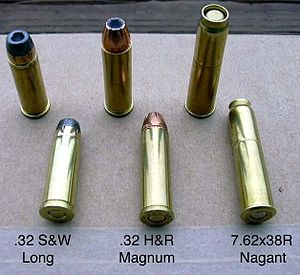
.32 S&W Long (left) in comparison with .32 H&R Magnum and 7.62×38mmR Nagant
|
||||||||||||||||
| Type | Revolver | |||||||||||||||
| Place of origin | United States | |||||||||||||||
| Production history | ||||||||||||||||
| Designer | Smith & Wesson | |||||||||||||||
| Designed | 1896 | |||||||||||||||
| Produced | 1896–Present | |||||||||||||||
| Specifications | ||||||||||||||||
| Parent case | .32 S&W | |||||||||||||||
| Base diameter | .337 in (8.6 mm) | |||||||||||||||
| Rim diameter | .375 in (9.5 mm) | |||||||||||||||
| Rim thickness | .055 in (1.4 mm) | |||||||||||||||
| Case length | .920 in (23.4 mm) | |||||||||||||||
| Overall length | 1.280 in (32.5 mm) | |||||||||||||||
| Ballistic performance | ||||||||||||||||
|
||||||||||||||||
| Source(s): Hodgdon [1] | ||||||||||||||||
The .32 S&W Long is a straight-walled, centerfire, rimmed handguncartridge, based on the earlier .32 S&W cartridge. It was introduced in 1896 for Smith & Wesson‘s first-model Hand Ejector revolver. Coltcalled it the .32 Colt New Police in revolvers it made chambered for the cartridge.[2]
Contents
[hide]
History[edit]
The .32 S&W Long was introduced in 1896 with the company’s first hand ejector revolver. The .32 Long is simply a lengthened version of the earlier .32 S&W. The hand ejector design has evolved some, but with its swing out cylinder on a crane, has been the basis for every S&W revolver designed since. In 1896, the cartridge was loaded with black powder. In 1903 the small hand ejector was updated with a new design. The cartridge stayed the same, but was now loaded with smokeless powder to roughly the same chamber pressure.[2]
When he was the New York City Police Commissioner, Theodore Roosevelt standardized the department’s use of the Colt New Policerevolver. The cartridge was then adopted by several other northeastern U.S. police departments.[3] The .32 Long is well known as an unusually accurate cartridge. This reputation led Police Commissioner Roosevelt to select it as an expedient way to increase officers’ accuracy with their revolvers in New York City. The Colt company referred to the .32 S&W Long cartridge as the .32 “Colt’s New Police” cartridge, concurrent with the conversion of the Colt New Police revolver from .32 Long Colt. The cartridges are functionally identical with the exception that the .32 NP cartridge has been historically loaded with a flat nosed bullet as opposed to the round nose of the .32 S&W Long.[2]
Current use[edit]
In the United States, it is usually older revolvers which are chambered in this caliber. The cartridge has mostly fallen out of use due to smaller revolvers chambered in .38 S&W Special being more effective for self-defense.[2]
The .32 S&W Long is popular among international competitors in ISSF 25m centerfire pistol, using high-end target pistols from makers such as Pardini,[4]Morini,[5] Hämmerli,[6] Benelli,[7] and Walther,[8] among others, but chambered for wadcutter bullet type.[9] The sporting variant of the Manurhin MR 73, also known as MR 32, is also chambered in .32 S&W Long.[10]
The IOF .32 Revolver manufactured by the Ordnance Factories Organization in India for civilian licence holders is chambered for this cartridge.[11]
Interchangeability[edit]
The .32 S&W Long headspaces on the rim and shares the rim dimensions and case and bullet diameters of the shorter .32 S&W cartridge and the longer .32 H&R Magnum and .327 Federal Magnum cartridges. The shorter .32 S&W may be fired in handguns chambered for the .32 S&W Long; and the .32 S&W Long may be fired in arms chambered for the longer H&R and Federal magnums; although the longer cartridges should not fit and must not be fired in arms designed for the shorter and less powerful cartridges.[12]
The .32 S&W Long and .32 Long Colt are not interchangeable.[2] At one time it was widely publicized that these rounds would interchange, but in truth it has never been deemed safe to do so.[2]

